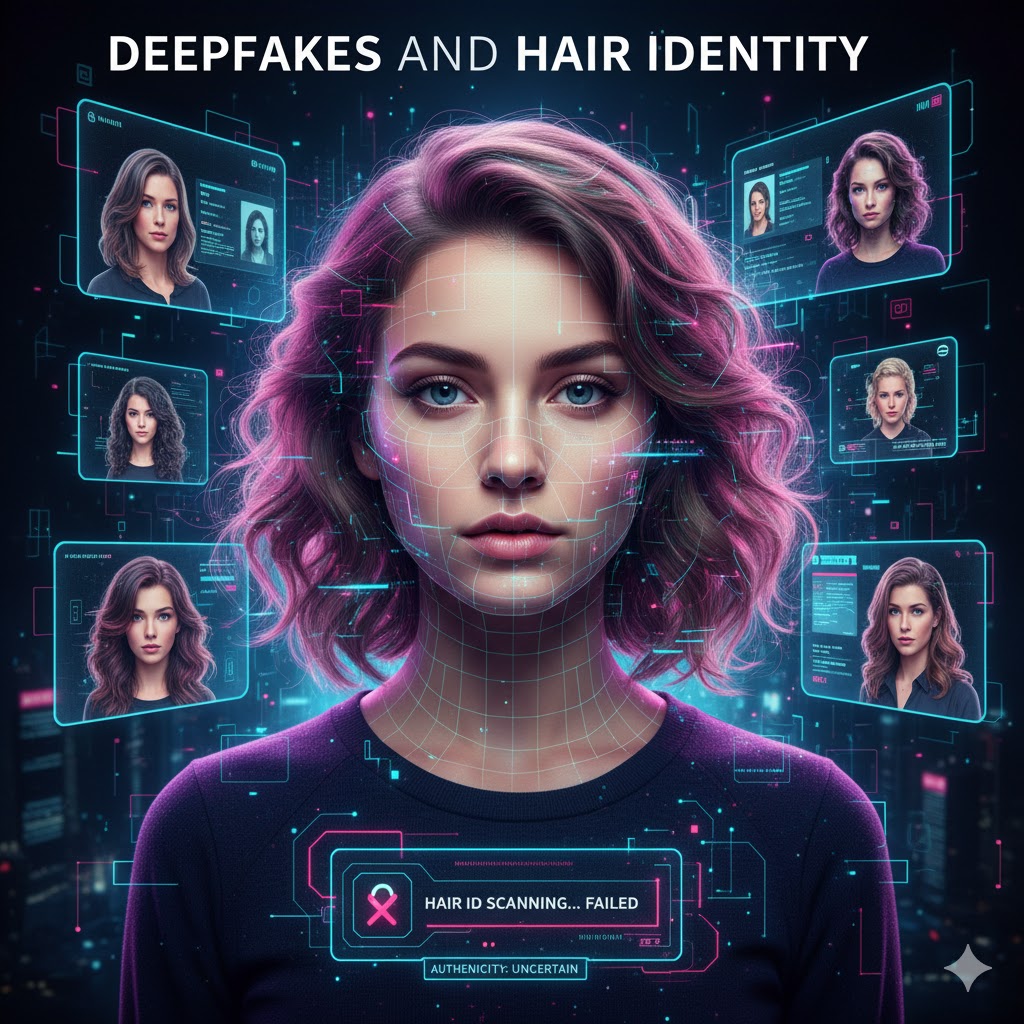In the age of artificial intelligence, it’s now possible to transform your face, voice, and even your hairline—all with the swipe of a screen. Deepfakes and AI-enhanced imagery are becoming common tools in everything from entertainment to personal branding. But what happens when artificial hair replaces your real one in photos, filters, or profile pictures—before your actual hair restoration journey begins?
At ZMD Hair, we’ve witnessed a surprising new question emerge in consultations: “If I already look like I have hair in my AI-enhanced photos, why should I bother with a transplant?” In this blog, we unpack the complex relationship between hair identity, AI editing, and the emotional disconnect that can arise when your digital self gets a head start on transformation.
What Are Deepfakes and Hair Filters?
Deepfakes are synthetic media generated using artificial intelligence—most notably deep learning and generative adversarial networks (GANs). Originally used to replace faces in video or mimic voices, deepfake tools are now used widely on social media and image-editing apps to simulate “perfect” appearances.
Hair has become one of the easiest features for AI to modify. Tools like:
- Face-smoothing filters
- Virtual try-on hair apps
- Deepfake profile image generators
- AI avatars and animated renderings
…can add a full head of hair, reshape a receding hairline, and simulate volume or style with eerie precision.
This creates an illusion: You see yourself with hair—consistently and convincingly—even though your physical reality hasn’t changed.
The Rise of AI-Based Hair Simulations
We now live in a world where people use apps like Facetune, Remini, Lensa, or AI-enhanced Zoom filters to create idealized versions of themselves. While fun and often empowering, this trend has a surprising psychological impact when it comes to hair loss.
At ZMD Hair, patients increasingly arrive with AI-edited images of themselves—already “restored”—and ask if these simulations match realistic transplant outcomes. Some even admit that their online dating profiles use these enhanced images, which portray a version of themselves that doesn’t yet exist.
This shift is reshaping not just how hair loss is perceived, but how hair identity is formed.
The Psychological Disconnect Between Digital and Physical Self
1. Virtual Hair, Real Insecurity
For many, seeing themselves with AI-generated hair offers a short-term confidence boost. But it can also deepen long-term dissatisfaction. Once the visual “ideal” is created, the actual experience of hair loss can feel even more distressing in contrast.
This mismatch between your online appearance and your physical experience can lead to:
- Increased social anxiety
- Hesitation to appear in live video or real-life interactions
- Avoidance of mirrors or photos without filters
- Delay in seeking professional help
Ironically, the digital hair that was meant to comfort can instead amplify the emotional impact of hair loss.
2. “Waiting for the Tech to Catch Up” Syndrome
Some patients postpone treatment under the assumption that AI-based hair replacement or digital implants will soon become physical reality. While virtual styling tools continue to evolve, real biological regeneration still requires surgical, medical, or regenerative therapy.
At ZMD Hair, we remind patients that the most meaningful change is not what happens in an app—it’s what happens on your scalp.
What AI Can Teach Us About Hair Identity
AI is not the enemy of self-confidence. In fact, it reveals something important: people want to see themselves with hair. They want to visualize potential. They want to feel restored.
That’s where AI imagery can be helpful. Some patients use simulations as motivation, a goal-setting visual aid that helps them commit to real treatment.
At ZMD Hair, we even use advanced imaging tools to simulate transplant density and coverage for our patients. But we ground those projections in medical reality—not wishful algorithms.
The Importance of Grounded Expectations
AI hair simulations are often based on aesthetic ideals, not biology. They do not factor in:
- Donor hair availability
- Scalp laxity
- Follicular unit density
- Healing time or graft survival
- Pattern progression over time
By contrast, a consultation with a board-certified hair restoration specialist includes a comprehensive assessment of your scalp, goals, lifestyle, and long-term success.
AI might give you a preview—but only real science gives you a plan.
Ethical Concerns: Misleading Representation Online
There’s also an ethical discussion emerging around the use of deepfake images on dating platforms, professional networks, or social media. If you appear with a digitally reconstructed hairline in every photo, are you presenting your true self—or an illusion?
This question becomes especially relevant when patients experience embarrassment or anxiety about meeting others in person after digitally “enhancing” their hair.
At ZMD Hair, we encourage patients to align their digital and physical identities—not through filters, but through restorative care that’s authentic and confidence-building.
Reclaiming Hair Identity in the Age of AI
Hair is a central part of self-expression, cultural identity, and emotional well-being. While AI tools can simulate hair visually, they don’t restore the tactile, emotional, or personal connection that real hair brings.
That’s where hair restoration becomes more than cosmetic—it becomes restorative. It rebuilds not just what people see, but how you feel. The simple act of running your fingers through your hair or choosing your own style without filters is deeply empowering.
ZMD Hair’s Approach to Real-World Hair Transformation
We believe in meeting the digital age with both innovation and integrity. At ZMD Hair, we:
- Use advanced scalp imaging to simulate realistic transplant outcomes
- Provide transparent expectations based on your unique biology
- Address both cosmetic and emotional aspects of hair loss
- Help patients move from simulation to restoration with medical precision
Whether you’re curious about how your hair might look post-transplant or struggling with filtered self-comparisons, we’re here to give you real options with real results.
Conclusion:
AI can edit your photos. It can even simulate a younger version of you with perfect density and designer stubble. But it can’t replace the real-life confidence that comes from looking in the mirror and seeing your authentic transformation.
If you’ve found yourself relying on filters or avatars to feel better about hair loss, you’re not alone. But the solution isn’t hiding. It’s healing.
At ZMD Hair, we help you close the gap between your virtual image and your real self. With expert care, personalized treatment, and compassionate guidance, we bring your hair restoration goals into reality.
📞 Ready to stop filtering your confidence?
Visit ZMDHair.com or call us now to schedule your private consultation.




